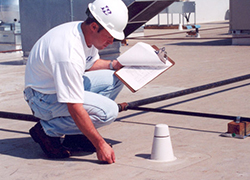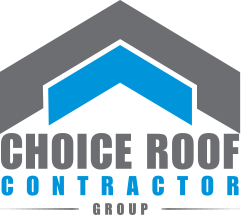 Over time, all roofs experience wear-and-tear or aging. Prolonged exposure to the sun, inclement weather such as heavy rainstorms, leaks forming from water infiltration between seams—these are just a few of the many factors that take their toll on a roof. When problems with a roof arise—even small ones—they demand a prompt response.
Over time, all roofs experience wear-and-tear or aging. Prolonged exposure to the sun, inclement weather such as heavy rainstorms, leaks forming from water infiltration between seams—these are just a few of the many factors that take their toll on a roof. When problems with a roof arise—even small ones—they demand a prompt response.
But the roof is often the last thing on a building owner’s mind. It’s also common for the person in charge of the building to try going without servicing the roof for as long as possible in order to save money. However, if it is to last for its service life or beyond, the roof needs regular inspection and frequent maintenance.
How often then should a roof be inspected? Below are listed some good steps for action.
When Should a Roof Be Inspected?
- A visual inspection of the roof should be done at least twice a year. Roofing studies have documented that a roof will last for only one-half of its life if it is not regularly inspected and maintained. A visual inspection will identify existing roof problems, help determine of any subtle issues are at play, and provide a baseline for a roof’s lifespan. A roofing professional who is well-trained in effective roof inspection practices, diagnostics, and repairs is best-suited for making a good visual inspection. The inspector will also need to be highly familiar with the layout, installation and repair, and types of failure particular to the roof system to be examined. More information about the steps involved in a roof inspection can be found in our prior blog post about roof inspections.
- In general, roof inspections should be timed before and after seasons of severe weather. Depending on the climate of your area, you should have your roof inspections done once before the period with the most severe weather, and then afterward as well. In northern parts of the United States, it is optimal to schedule inspections before and after the wintertime. In these areas, roofs typically experience the most damage from winter storms and the weight of gathering precipitation. In warmer parts of the United States, it is best to schedule roof inspections before and after the summertime. In hotter weather, a roof expands in response to thermal shock. For gauging the effect of thermal energy on your roof, it is optimal to have roof inspections done before and after the peak heating season.
- Non-visual inspections such as infrared scans should be completed according to the roof’s unique requirements. Non-visual inspections should never replace visual inspections. However, they can be highly complementary to the visual scan, as they can identify subtle issues such as hard-to-detect leaks, note the presence of moisture below a roof surface, and provide a greater, in-depth look at a roof’s status. These inspections should be timed in coordination with visual inspections so that the building owner and staff have good knowledge of their roof’s condition year-round. However, it is recommended that the roof’s condition and age, as well as factors such as how much foot traffic goes on the roof, be taken into consideration when scheduling non-visual inspections.
- A roof “housekeeping” schedule will vary depending on the roof system used, but can be as often as a quarterly-to-monthly basis. Some roof systems are engineered for fewer maintenance and upkeep requirements than others available on the market. Conklin roof systems are such an example. However, other roofs require more attention, and the more a roof is maintained, the longer it will last for the long term. In general, experts recommend that a building staff account for a roof’s condition, the presence of any debris, any potential trouble, and other points of consideration on a monthly-to-quarterly basis. Consulting with a qualified, experienced roofing professional about your roof needs is best for determining how often your roof should be minimally examined. Also, be aware that some roof warranties come with inspections in their coverage period. Never settle for relying upon your warranty as an alternative to having your roof regularly inspected and maintained; neglecting to do so may even negate your roof’s warranty coverage.
Call us today at 800-670-5583 to get a free roof estimate. While doing so, do not forget to ask about the non-prorated warranties that cover materials and labor for Conklin roof systems.


